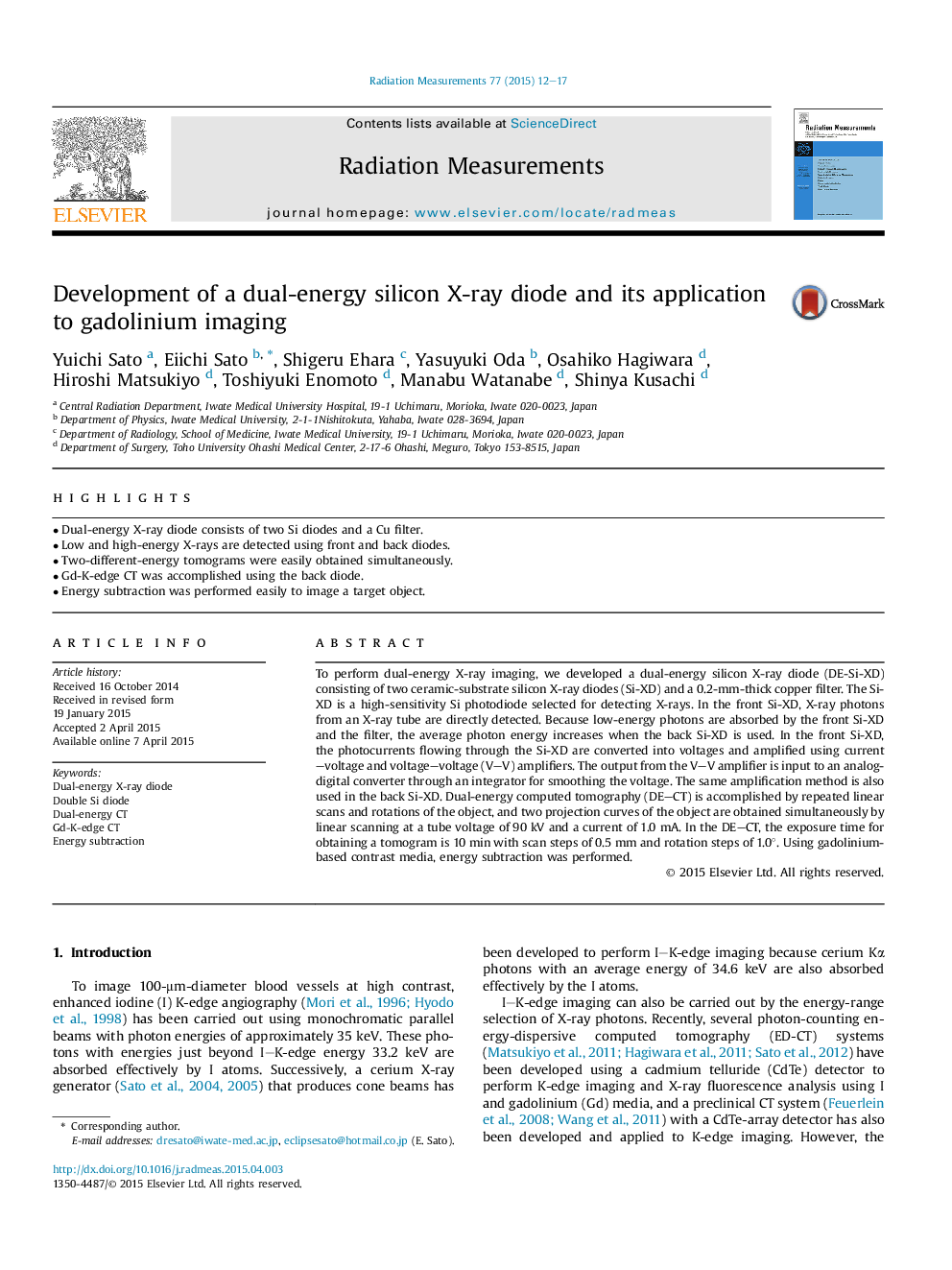| Article ID | Journal | Published Year | Pages | File Type |
|---|---|---|---|---|
| 1888136 | Radiation Measurements | 2015 | 6 Pages |
•Dual-energy X-ray diode consists of two Si diodes and a Cu filter.•Low and high-energy X-rays are detected using front and back diodes.•Two-different-energy tomograms were easily obtained simultaneously.•Gd-K-edge CT was accomplished using the back diode.•Energy subtraction was performed easily to image a target object.
To perform dual-energy X-ray imaging, we developed a dual-energy silicon X-ray diode (DE-Si-XD) consisting of two ceramic-substrate silicon X-ray diodes (Si-XD) and a 0.2-mm-thick copper filter. The Si-XD is a high-sensitivity Si photodiode selected for detecting X-rays. In the front Si-XD, X-ray photons from an X-ray tube are directly detected. Because low-energy photons are absorbed by the front Si-XD and the filter, the average photon energy increases when the back Si-XD is used. In the front Si-XD, the photocurrents flowing through the Si-XD are converted into voltages and amplified using current–voltage and voltage–voltage (V–V) amplifiers. The output from the V–V amplifier is input to an analog-digital converter through an integrator for smoothing the voltage. The same amplification method is also used in the back Si-XD. Dual-energy computed tomography (DE–CT) is accomplished by repeated linear scans and rotations of the object, and two projection curves of the object are obtained simultaneously by linear scanning at a tube voltage of 90 kV and a current of 1.0 mA. In the DE–CT, the exposure time for obtaining a tomogram is 10 min with scan steps of 0.5 mm and rotation steps of 1.0°. Using gadolinium-based contrast media, energy subtraction was performed.
